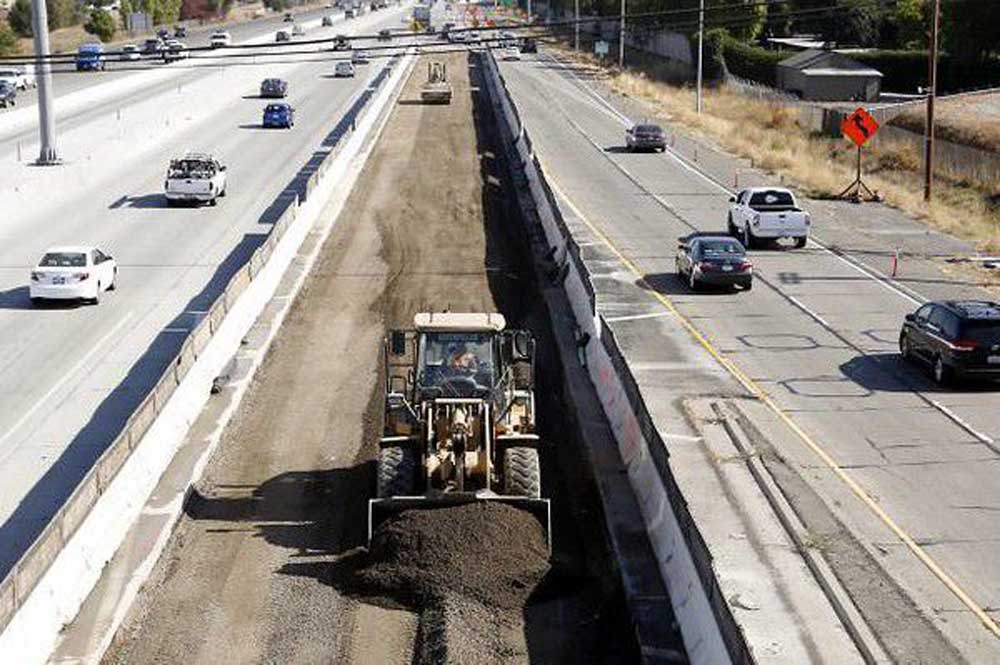Editorial: Conservative principles for infrastructure projects
Published 2:49 pm Tuesday, December 6, 2016

- FILE - In this Oct. 15, 2015, file photo, vehicles pass a highway construction site on Interstate 80 in Sacramento, Calif. The nation’s infrastructure is in need of repair and improvement. (AP Photo/Rich Pedroncelli, File)(Credit: AP)
Think tanks such as the Cato Institute and the Heritage Foundation will play an important role in the Trump administration -as crafters of policy and critics of Trump’s populist tendencies.
What will that look like? A good example can be found in Heritage’s newly released report, “Building on Victory: An Infrastructure Agenda for the New Administration.”
Trump has pledged to rebuild American’s infrastructure. But like President Obama’s many jobs programs, it’s not as easy as it looks. “Shovel-ready jobs” are rarely shovel-ready, and big spending programs are inevitably politicized.
So Heritage lays out some principles for Trump. First, Heritage says, based infrastructure projects on reality, not rhetoric about failing bridges and crumbling highways.
“The notion that America’s infrastructure is ‘crumbling’ and in uniquely poor condition is not supported by data,” Heritage explains. “The percentage of the nation’s bridges deemed ‘structurally deficient’ (not necessarily unsafe, but requiring extensive maintenance) has declined annually since 1990 and now sits at under 10 percent, well under half of what it was 25 years ago. Similarly, analyses of highway pavement quality conclude that the nation’s major roads have been steadily improving in quality and are likely in their best shape ever.”
And infrastructure projects are often made more expensive by red tape and environmental restrictions.
“The Administration should build on the efforts of Congress and the Obama Administration to speed projects through the federal permitting process and National Environmental Policy Act review,” Heritage says.
The foundation also urges Trump to not view infrastructure rebuilding as a “stimulus plan,” funded with tax dollars.
“Studies reviewing fiscal stimulus packages conclude that their results are a mixed bag at best, and often have negative effects,” Heritage says. “Promises of job creation from infrastructure spending are rarely fulfilled because federal spending on infrastructure is especially ill suited to create new jobs quickly. Planning, permitting, and review processes bog down infrastructure projects for years before construction can be started. Furthermore, unemployment across the economy is low, especially for the highly skilled construction workers required for infrastructure projects. Indeed, the Associated General Contractors report that more than two-thirds of contractors are having trouble hiring skilled workers. Thus, new spending would do very little to spur employment in the current environment.”
Nor should Trump establish an “infrastructure bank,” as some in Congress are calling on him to do. Instead, he should seek “funding and regulatory reforms that make it easier to invest in major infrastructure projects.”
The point here is that rebuilding projects can be done right, if the new administration is careful.
“President-elect Trump should not be taken in by hyperbolic rhetoric about the state of the nation’s infrastructure or lured by false promises of stimulus-induced job creation,” Heritage says. “Instead, he and his Administration should carefully consider the nation’s needs and the federal government’s role in meeting them. The best way for the new president to improve the nation’s infrastructure is to remove the federal government from the equation through deregulation and funding reforms, not to follow his predecessor down the path of more government spending.”






